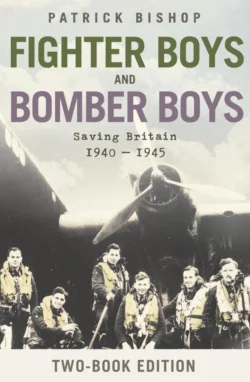Fighter Boys and Bomber Boys: Saving Britain 1940-1945

Patrick Bishop
Тип: электронная книга
Жанр: Книги о войне
Язык: на английском языке
Стоимость: 1174.18 ₽
Статус: В продаже
Издательство: HarperCollins
Дата публикации: 16.04.2024
Отзывы: Пока нет Добавить отзыв
О книге: Two of Patrick Bishop’s bestselling books, ‘Fighter Boys’ and ‘Bomber Boys’, are combined in one eBook edition.FIGHTER BOYS: In the summer of 1940, the future of Britain and the free world depended on the morale and skill of the young men of Fighter Command. This is their story.The Battle of Britain is one of the most crucial battles ever fought, and the victory of Fighter Command over the Luftwaffe has always been celebrated as a classic feat of arms. But, as Patrick Bishop shows in this superb history, it was also a triumph of the spirit in which the attitudes of the pilots themselves played a crucial part. Reaching beyond the myths to convey the fear and exhilaration of life on this most perilous of frontlines, Patrick Bishop offers an intimate and compelling account that is a soaring tribute to the exceptional young men of Fighter Command.BOMBER BOYS: Patrick Bishop looks at the lives and the extraordinary risks that the painfully young pilots of Bomber Command took during the air-offensive against Germany from 1940-1945.Like RAF pilots, the thousands of brave young men who joined Bomber Command took to the air to help Britain triumph in World War Two. But in the glow of victory, the fighter pilots were lauded for their efforts while the Bomber Boys faded in national memory. Crucial in the heat of combat, they were politically awkward afterwards. Yet with an average life expectancy shorter than that of soldiers on the Western front in WWI, these men faced death, injury and capture time and again to send bombs through the shrieking flak onto enemy territory. ‘Bomber Boys’ is a tribute to their strength, courage and heroism – filling in the historical blanks and immortalising their memory.